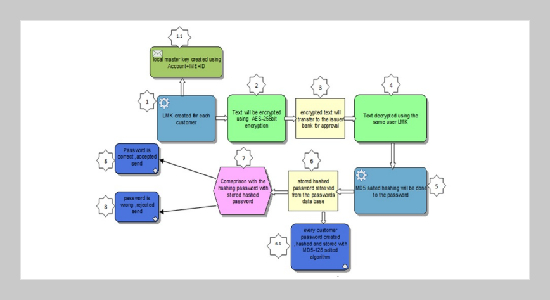REFERENCES
- [1] Tomaso Aste, Paolo Tasca, and Tiziana Di Matteo. Blockchain technologies: The foreseeable impact on society and industry. computer, 50(9):18–28, 2017.
- [2] Zibin Zheng, Shaoan Xie, Hongning Dai, Xiangping Chen, and Huaimin Wang. An overview of blockchain technology: Architecture, consensus, and future trends. In 2017 IEEE international congress on big data (BigData congress), pages 557–564. IEEE, 2017.
- [3] Satoshi Nakamoto. Bitcoin: A peer-to-peer electronic cash system. Technical report, Manubot, 2019.
- [4] G Wood. Ethereum: a secure decentralised generalised transaction ledger [jelektronnyj resurs]. 32 c. gavwood.com: official site URL: https://gavwood. com/paper. pdf data obrashhenija, 3, 2019.
- [5] Vitalik Buterin et al. A next-generation smart contract and decentralized application platform. white paper, 3(37), 2014.
- [6] Morgen E Peck. Blockchains: How they work and why they’ll change the world. IEEE spectrum, 54(10):26–35, 2017.
- [7] Jørgen Svennevik Notland. Cryptocurrency as money.
- [8] Shi Chen, Cathy Yi-Hsuan Chen, Wolfgang Karl Härdle, Teik Ming Lee, and Bobby Ong. Econometric analysis of a cryptocurrency index for portfolio investment. In Handbook of Blockchain, Digital Finance, and Inclusion, Volume 1, pages 175–206. Elsevier, 2018.
- [9] Kim-Kwang Raymond Choo. Cryptocurrency and virtual currency: Corruption and money laundering/terrorism financing risks? In Handbook of digital currency, pages 283–307. Elsevier, 2015.
- [10] Sajad Homayoun, Ali Dehghantanha, Marzieh Ahmadzadeh, Sattar Hashemi, and Raouf Khayami. Know abnormal, find evil: frequent pattern mining for ransomware threat hunting and intelligence. IEEE transactions on emerging topics in computing, 8(2):341–351, 2017.
- [11] Opeyemi Osanaiye, Haibin Cai, Kim-Kwang Raymond Choo, Ali Dehghantanha, Zheng Xu, and Mqhele Dlodlo. Ensemble-based multi-filter feature selection method for ddos detection in cloud computing. EURASIP Journal on Wireless Communications and Networking, 2016(1):1–10, 2016.
- [12] Martin Arnold. Five ways banks are using blockchain. Financial Times, 16, 2017.
- [13] Bernard Marr. How blockchain will transform the supply chain and logistics industry. Retrieved February, 22:2018, 2018.
- [14] Reza M Parizi, Ali Dehghantanha, et al. Smart contract programming languages on blockchains: An empirical evaluation of usability and security. In International Conference on Blockchain, pages 75–91. Springer, 2018.
- [15] R Aitken. Smart contracts on the blockchain: Can businesses reap the benefits. Forbes, 2017.
- [16] K Megget. Securing the supply chain. 2018.
- [17] Tara Salman, Maede Zolanvari, Aiman Erbad, Raj Jain, and Mohammed Samaka. Security services using blockchains: A state of the art survey. IEEE Communications Surveys & Tutorials, 21(1):858–880, 2018.
- [18] Paul J Taylor, Tooska Dargahi, Ali Dehghantanha, Reza M Parizi, and Kim-Kwang Raymond Choo. A systematic literature review of blockchain cyber security. Digital Communications and Networks, 6(2):147–156, 2020.
- [19] Marcella Atzori. Blockchain technology and decentralized governance: Is the state still necessary? Available at SSRN 2709713, 2015.
- [20] Deepak Puthal, Nisha Malik, Saraju P Mohanty, Elias Kougianos, and Chi Yang. The blockchain as a decentralized security framework [future directions]. IEEE Consumer Electronics Magazine, 7(2):18–21, 2018.
- [21] Chi Yang, Deepak Puthal, Saraju P Mohanty, and Elias Kougianos. Big-sensing-data curation for the cloud is coming: A promise of scalable cloud-data-center mitigation for next-generation iot and wireless sensor networks. IEEE Consumer Electronics Magazine, 6(4):48–56, 2017.
- [22] Deepak Puthal, Rajiv Ranjan, Surya Nepal, and Jinjun Chen. Iot and big data: An architecture with data flow and security issues. In Cloud infrastructures, services, and IoT systems for smart cities, pages 243–252. Springer, 2017.
- [23] Stefan K Johansen. A comprehensive literature review on the blockchain as a technological enabler for innovation. Dept. of Information Systems, Mannheim University, Germany, pages 1–29, 2018.
- [24] Tejal Shah and Shalilak Jani. Applications of blockchain technology in banking & finance. Parul CUniversity, Vadodara, India, 2018.
- [25] Stefan Seebacher and Ronny Schüritz. Blockchain technology as an enabler of service systems: A structured literature review. In International Conference on Exploring Services Science, pages 12–23. Springer, 2017.
- [26] Lawrence J Trautman. Is disruptive blockchain technology the future of financial services? 2016.
- [27] Ittay Eyal. Blockchain technology: Transforming libertarian cryptocurrency dreams to finance and banking realities. Computer, 50(9):38–49, 2017.
















